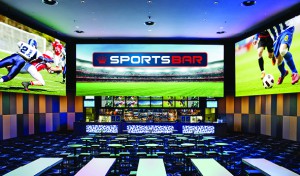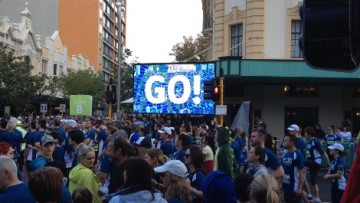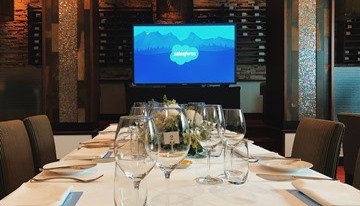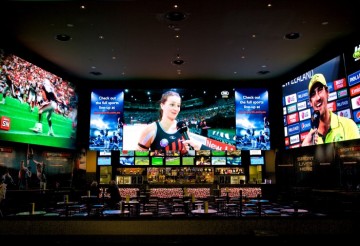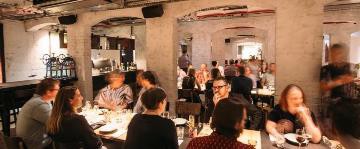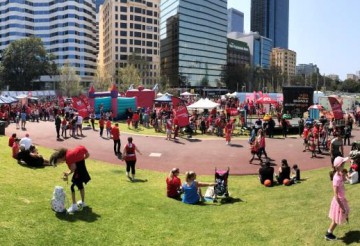What is the Difference Between a Plasma TV, LCD TV and LED LCD TV?

Whether you need a TV for your home, want to hire a TV for an event, or are hosting a corporate presentation, you will need the right TV to suit your purpose.
Options include plasma TVs, LCD TVs and LED LCD TVs. But with all the jargon, it’s confusing. And it can be difficult to know which screen type is best for you.
But fear not! Here, we have deciphered the lingo and explained the true differences for you!
Plasma TV Screens
Truth be told, plasma TVs are old technology. Samsung, LG and Panasonic stopped producing plasmas in 2013/2014. So, if you are looking to hire a TV screen for an event, we wouldn’t recommend hiring a plasma – LCDs and LED LCDs are the way to go.
How Do They Work?
Essentially, the plasma TV consists of cells and inside each cell are two glass panels. A neon-xenon gas is injected and sealed within the gap between the glass panels.
When using a plasma TV, the gas generates red, green and blue light which creates an image on the TV screen.
Key Features
- Pro – Flat and thin
- Pro – Good colour accuracy and saturation
- Pro – Cheaper than LCD or LED TV screens
- Con – Not as bright as LCD or LED screens
- Con – Use more energy compared to LCD and LED screens
- Con – Shorter display life-span
- Con – Screen-burn of static images
- Con – Not suitable for rooms with ambient light (screen glare)
- Con – Heat generation due to the burning of phosphors (gas)
LCD TV Screens
You will likely be most familiar with these TV screens – you may even have one in your home, courtesy of JB Hifi or Harvey Norman. LCD screens are still popular both for household and commercial use.
However, not all TVs are created equal. The type of LCD screen in your home (a ‘domestic’ or ‘consumer’ screen) should be different from the type of LCD screen used for events, digital signage, or corporate applications (for these applications you would need a prosumer, semi-commercial or commercial screen).
So, keep this in mind when buying or hiring your LCD screen – make sure it suits your purpose.
How Do They Work?
LCD stands for ‘liquid crystal display.’ It consists of two layers of polarizing film and a layer of liquid crystals between the two films. These liquid crystals allow light to filter through when electricity is passed through them. The crystals do not produce light on their own however – there are millions of fluorescent lights at the back of the screen to produce the light, as well as shutters to control the passage of light through the liquid crystals.
Key Features:
- Light and thin
- Does not emit harmful electromagnetic radiation
- Fluorescent lights to illuminate the images on-screen
- More energy-efficient than plasmas
- Does not generate a true-black colour
- No burn of static images
- Cool running temperature
Essentially, an LED LCD TV is a type of LCD screen, it just uses LEDs instead of fluorescent lights. Technically you could call them ‘LED-backlit LCD TV’ screens, but mostly they are called LED LCD screens.
How Do They Work?
LED stands for ‘light emitting diodes’. LED screens are very similar to LCD screens, except that they use LEDs instead of fluorescent lights to illuminate the images on screen.
LEDs can be placed at the back of the screen (known an ‘backlit LEDs’ or ‘full array lighting’), or around the edges of the screen (known as ‘edge lighting’).
Key Features:
- LEDs to illuminate the images on screen
- Slimmer than LCD screens
- Much better image quality
- Sharper colours and more realistic images
- Very energy-efficient
- Very bright
- Great viewing in a room with ambient light
- Produce a better picture than LCD screens
So, this gives you an overview of the different kinds of TV screens commonly available. Whether you are considering buying one for your home or hiring a TV screen for an event, make sure it fits your purpose!
What You Need to Remember
Whether you are buying or hiring a TV screen, you need to consider:
1). where the TV will be located;
2). the amount of ambient light in the location;
3). what size of TV will be most suitable in the location; and
4). what content will be displayed.
If you are wanting a TV for a professional or commercial application, we would recommend a semi-commercial or commercial TV screen.
Think of it this way, you wouldn’t drive a Mini across the Nullarbor Desert – you’d need a good SUV which has the power and performance to ‘do the job.’ This analogy applies to TVs – don’t hire a ‘domestic’ TV screen if you are using it for a high-profile event or corporate presentation, trust us, the difference is obvious.
For all your screen hire needs, contact the experts at Mega Vision today!
What is the Difference Between a Smoke Machine, Haze Machine and Low Fog Machine?
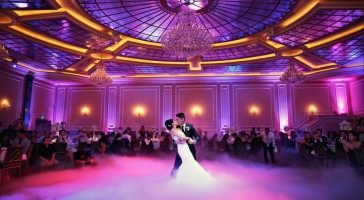
We are often asked what the difference is between these three special effects machines. So, we thought we’d put together this quick guide to explain what the key differences are & which machine you should use to create the effect you want.
SMOKE MACHINE
Smoke machines, also referred to as fog machines, use special fluid to produce thick white smoke to create an impressive visual effect. They often come with a remote control to control the volume of smoke produced as well as the duration. Smoke machines produce a similar effect to low fog machines, however the heated smoke produced by smoke machines rises and dissipates around the room, whereas low fog machines produce cold liquid particles and the fog remains close to the ground.
- Input: Smoke fluid
- Output: smoke
- Particles: smoke
- Use smoke machines for: shows, concerts, parties, spooky effects. Use when you want the whole room to be smoky, rather than just on the ground (low fog machine).
LOW FOG MACHINE
A low fog machine (similar to dry ice machines) produces a thick, opaque fog that remains close to the ground to create a ‘walking on air’ effect. Fog machines create this effect by cooling fluid to liquid particles. A low fog machine usually creates an intense burst of fog rather than a subtler diffusion, like a hazer. The effect of a low fogger is similar to that of a smoke machine– they are both designed to create a visual effect / impact, whereas a haze machine is designed to emphasize other effects such as lighting beams or lasers.
There are two main types of low fog machine:
- A dry ice machine – this uses solid dry ice and water. It is a simpler method but does not have the length of run time as the cryogenic machine.
- A cryogenic machine – this uses a liquid such as liquid CO2 gas and has a longer-lasting effect.
- Input: Dry Ice or Liquid CO2 Gas (depending on the type of machine)
- Output: low lying fog
- Particles: liquid droplets
- Use a low fog machine for: weddings (especially for the first dance), shows, theatres, Halloween parties.
HAZE MACHINE
Haze machines, also known as ‘hazers,’ can be oil-based or water-based and are used to complement lighting effects. Haze machines create a fine and subtle haze with a long ‘hang’ time – the particles linger in the air for a long time before dissipating making them ideal for use at shows and concerts. They produce a much finer and less noticeable effect than smoke or low fog machines, as they are designed to emphasize the effects of lighting allowing you to see rays and patterns you would not normally see.
- Input: Haze fluid
- Output: fine mist / haze
- Particles: liquid droplets
- Use haze machines for: shows, concerts, festivals and anywhere you want to emphasize light effects or create a misty atmosphere. Perfect for when you don’t want the thick, opaque effect of a smoke machine or low fog machine.
For any of these machines, there is a big difference between the cheaper versions and the professional-grade machines. If you want a quality and reliable performance at your event, make sure you go for the latter. This does not necessarily mean that you need to pay more, but you will definitely get better value for money. Professional-grade machines usually have a continual automatic cycle, meaning that they can operate continually, without needing to stop.
For more information on smoke, low-fog or haze machine hire, contact our friendly team today.
7 Top Tips For Choosing An Event Space
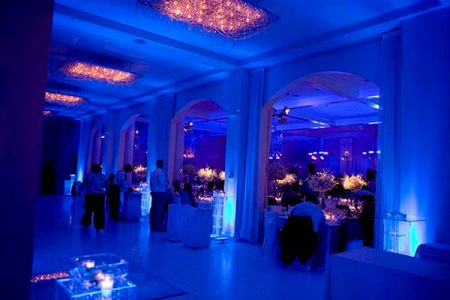
The success of any event is partly determined by the suitability of the space or venue itself. Get it wrong and it could be a disaster, but get it right and your event could be a cracker!
Drawing upon our many years of experience in events management and AV installation, we have compiled a list of top tips for choosing a space to suit your event.
1. Budget
Be clear on what the budget is from the outset. Although you might want the river-front, roof-top space with free-flowing Pol Roger, the budget might not (and probably won’t) allow for it. You can create a fantastic event without spending a fortune. For example, lighting and special effects can transform even the ugliest of spaces. If you have a clearly defined budget from the get-go, costs won’t spiral and you won’t be left feeling bankrupt.
2. Know Your Guests
A key part of choosing an event space is knowing who your guests will be and how many you expect to attend. The number of people will definitely influence your choice of event space so make sure you have an estimate in mind (e.g. 50-65 or 200-250). The guests you are inviting will also influence the type of event space – a small hen’s party and a 50th birthday bash for 150 guests will require very different event spaces and styles.
3. Event Days and Times
Check the school holidays calendar as well as public holidays as this may affect the desired date for your event (and if the event space is available).
Very often, you might get the event space you want, but not the date, or vice versa. Try and be flexible where possible and have 2 or 3 potential dates in mind.
4. Scope Out
Once you have the event date and guest list narrowed down, you need to have a look at the potential locations. List down 3 or 4 criteria that are important for your event (e.g. sea views, accommodates 300 people, in-house catering, etc.) then search for event spaces that might match these and do a site visit. Don’t be afraid to scope out a few different venues before deciding which one to go for. A hotel or function space are very popular for weddings and corporate events, but a winery cellar, modern warehouse or museum hall can be really fun alternative options. When scoping an event space, consider also:
- Event theme
- Location – is the event indoors, alfresco or a combination of both?
- Venue fees – what are they and what is included?
- Space – is there enough for the type of event you are planning (including a dance floor)?
- Parking – is there enough and is it free or paid?
- Unique features of the space that meet your criteria for the event
5. Audio-Visual
Unfortunately, AV is often on of the last things considered when it comes to event planning. And yet it is one of the first things your guests will notice if it is not working properly! Make sure you use quality AV equipment from a reputable company to ensure quality sound and lighting for the duration of your event. Things to consider include:
- Audio – are you delivering a speech? Is there going to be dancing? You will need to ask the venue if you can use their audio system, or arrange to hire your own.
- Vision – are you delivering a PowerPoint? You will need to connect your laptop to the venue’s projector or TV. Are you hosting a sports night? Make sure you have enough big screens to broadcast the game. A big LED screen provides a ‘wow’ factor and is the best way to watch the game.
- Lighting – this will depend on the theme of the event. There is a huge range of lighting that can create any colour or effect you want, including lighting with a company’s logo or a person’s initials.
- Staging – do you need a low riser for the wedding table? Or a high catwalk stage for a fashion event? You may be able to use the venue’s staging if available or arrange to hire some.
- Special Effects – if you want to add some extra intrigue and excitement, look at hiring a dry ice machine, bubble machine or snow machine, depending on your event theme.
6. Restrictions
Some venues have a preferred supplier list, but that doesn’t necessarily mean you have to use them. Very often, sourcing outside suppliers can be less expensive. These might include: security, audio-visual, catering and furniture hire among others. Don’t be afraid to shop around for different suppliers.
7. Other Events
If you are having your event in a hotel, function space or hospitality venue, it is highly likely there will be other events or at least other people there at the same time as your event. Make sure there is sufficient signage for your guests to follow so they don’t get lost (including signage for the toilets). Keep in mind the noise factor – if you are having speeches, you don’t want there to be lots of noise from the room next door disrupting your event.
So whether you’re planning a wedding, corporate event, or an intimate cocktail party, the event space has the power to define the experience your guests have. You only have one chance to make a good impression on your guests – so make it a great one!





